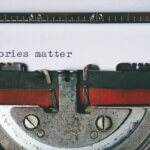Diversity, Equity, and Inclusion (DEI) programs have become a cornerstone of progressive organizations worldwide. Effective communication is at the heart of these initiatives, as it plays a pivotal role in fostering inclusivity and belonging.
To communicate inclusively, it’s essential to understand the multifaceted nature of diversity. In this article, we’ll explore the various types of diversity and their significance in DEI programs.

The diversity spectrum
When talking about diversity, we often think of gender (male, female, non-binary) and culture (countries of origin, customs, traditions, languages, and religions). In my own journey of understanding diversity, I’ve come to divide them into: visible and invisible as below
Visible
- Cultural
- Gender
- Generational
- Disability status
Invisible
- Disability status
- Life experiences
- Marital status
- Neurodiversity
- Parental status
- Sexual orientation
- Socio-economic status
- Thinking
Further reading
Intersectionality
Individuals often belong to multiple diverse groups simultaneously, resulting in unique and complex experiences. This is called ‘intersectionality’ (Crenshaw, 2013) and highlights the importance of considering these overlapping identities.
Why it matters
Inclusive communication professionals must understand that every dimension of diversity matters because it directly impacts individuals’ experiences within your organization or community. A diverse and inclusive environment is not only ethically sound but also beneficial for innovation, creativity, and overall success (Pless & Maak, 2004).
Your role as communication professional
As communication professional in BDEI programs, your role is pivotal in driving change. Here are some key strategies:
- Inclusive language: Use language that respects all identities and avoids stereotypes. Suzanne Wertheim’s ‘Strategies to Foster Inclusive Language at Work‘ is a good place to start, along with ‘The Inclusive Language Handbook‘.
- Diverse representation: Ensure that your communication materials represent a range of backgrounds and experiences.
- Accessibility: Make information accessible to everyone, including individuals with disabilities. Activity Alliance has a good list of factsheets that answer this need.
- Feedback mechanisms: Create avenues for feedback on your communication to continually improve inclusivity.
In other words
Effective communication in BDEI programs requires a deep understanding of the spectrum of diversity. Recognize that diversity goes beyond the surface and encompasses a myriad of dimensions. Embrace these differences, listen to diverse voices, and commit to creating an inclusive environment through your communication efforts.
References
- Cho, S., Crenshaw, K. W., & McCall, L. (2013). Toward a field of intersectionality studies: Theory, applications, and praxis. Signs: Journal of women in culture and society, 38(4), 785-810.
- Pless, N., & Maak, T. (2004). Building an inclusive diversity culture: Principles, processes and practice. Journal of business ethics, 54, 129-147.
- Wertheim, S. (2021). Strategies to Foster Inclusive Language at Work. LinkedIn Learning.






